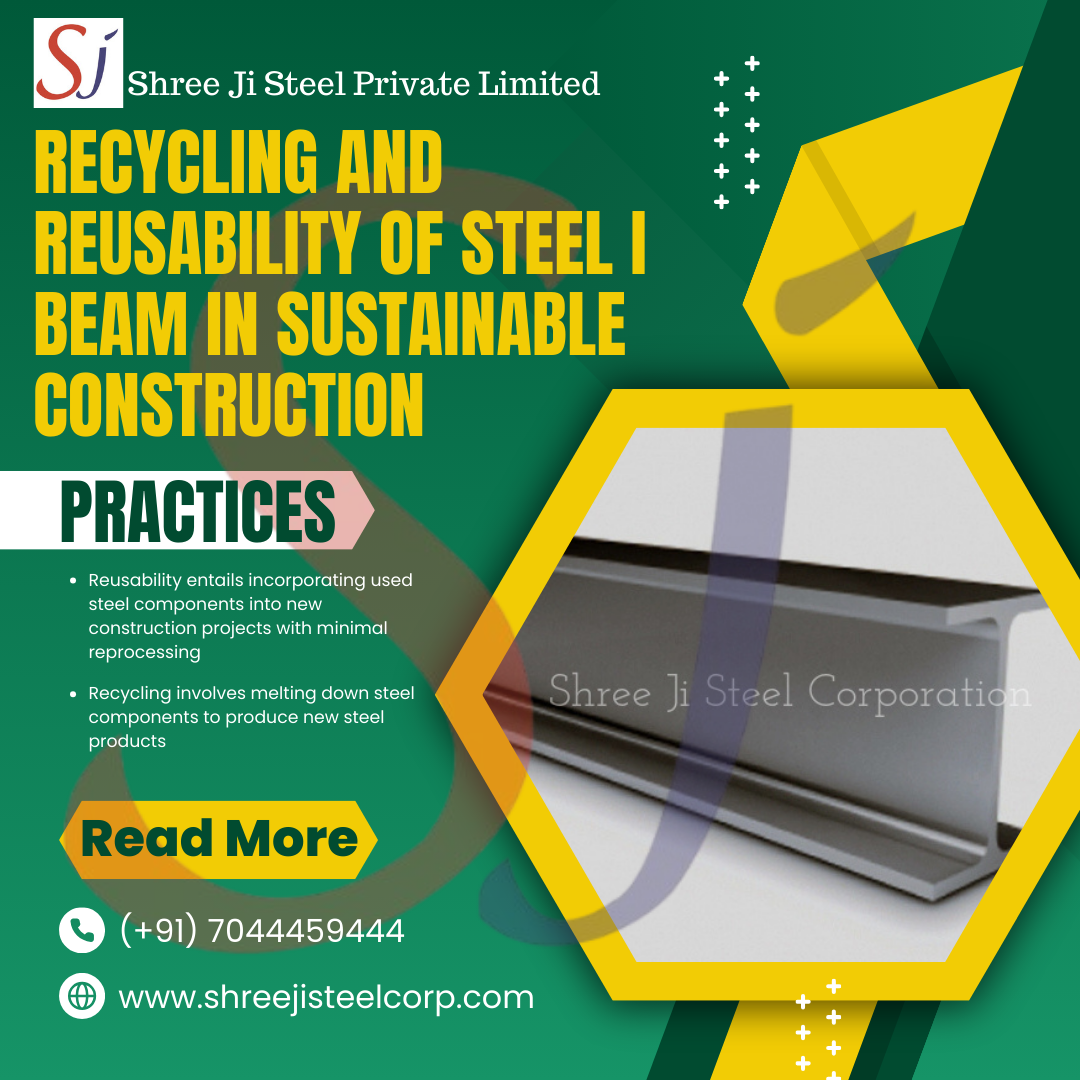In the realm of sustainable construction, the recycling and reusability of steel I-beams play a pivotal role in reducing environmental impact and promoting resource efficiency. Steel I-beams, also known as I-section beams, are fundamental components in framed structures, offering strength and durability. Their inherent properties make them ideal for recycling and reuse, aligning with the principles of sustainable development.
Recycling of Steel I-Beams
Recycling involves melting down steel components to produce new steel products. This process significantly reduces the need for raw material extraction and energy consumption. According to the World Steel Association, recycling one ton of steel conserves approximately 1.1 tons of iron ore, 630 kilograms of coal, and 55 kilograms of limestone. Moreover, it reduces water consumption by 40% and greenhouse gas emissions by 58%.
In the construction industry, structural steel elements like I-beams are often recycled at the end of a building’s life cycle. The steel is collected, processed, and remelted in electric arc furnaces to produce new steel products. This method not only diverts substantial amounts of waste from landfills but also contributes to the circular economy by keeping materials in use for as long as possible.
Reusability of Steel I-Beams
Beyond recycling, reusing steel I-beams in their existing form offers even greater environmental benefits. Reusability entails incorporating used steel components into new construction projects with minimal reprocessing. This approach eliminates the energy and emissions associated with melting and reforming steel, leading to significant carbon savings.
A study highlighted in the New Civil Engineer indicates that reusing steel can result in up to a 97% reduction in embodied carbon compared to using new steel, and is ten times less carbon-intensive than recycling.
Challenges and Solutions in Reusing Steel I-Beams
- Standardization and Certification: Ensuring that reused steel components meet current building codes and safety standards can be complex. Implementing rigorous inspection and certification processes is essential to guarantee structural integrity.
- Design for Deconstruction: Traditional construction methods often do not consider the future disassembly of structures. Adopting design practices that facilitate easy deconstruction can enhance the feasibility of reusing steel components.
- Supply Chain Logistics: Establishing a reliable supply chain for reclaimed steel requires coordination among demolition contractors, material handlers, and construction firms. Creating centralized material banks can streamline this process.
Recent Developments in Sustainable Steel Production
The steel industry is witnessing significant advancements aimed at reducing its carbon footprint. For example, Westview Group plans to establish a $750 million low-carbon steel mill in Brisbane by 2027. This facility will utilize electric arc furnace technology to produce up to 500,000 tonnes of sustainable reinforcing steel annually, cutting emissions by 80% per tonne compared to traditional methods.
Such developments highlight the industry’s commitment to sustainable practices, encompassing both the production of new steel and the enhancement of recycling and reusability processes.
Shree Ji Steel Private Limited, Delivers the Best Materials with ISI Ceritificate for the Delivered product. Purchase SAIL NPB and WPB (https://shreejisteelcorp.com/sail-ismb/) from Shree Ji Steel.
Conclusion
The recycling and reusability of steel I-beams are integral to sustainable construction practices. By embracing these approaches, the construction industry can significantly reduce its environmental impact, conserve resources, and move closer to a circular economy. Overcoming the challenges associated with steel reuse requires collaborative efforts and innovative solutions, but the potential benefits make it a worthwhile endeavor.


